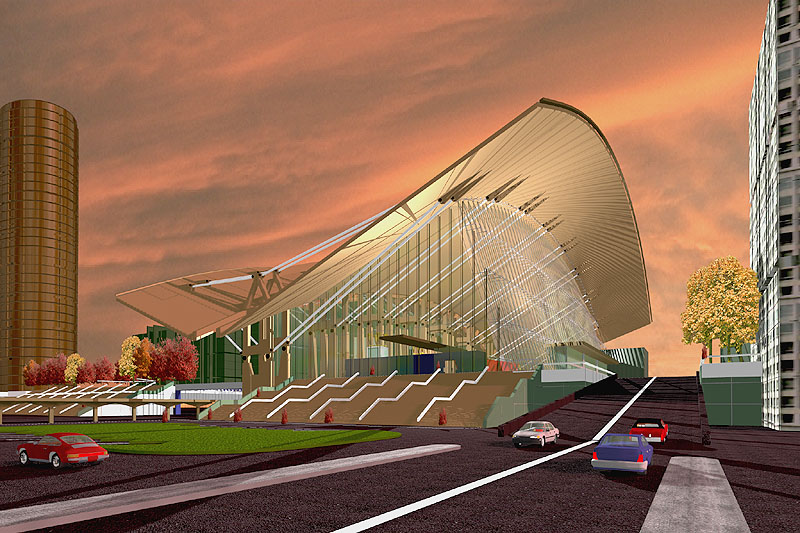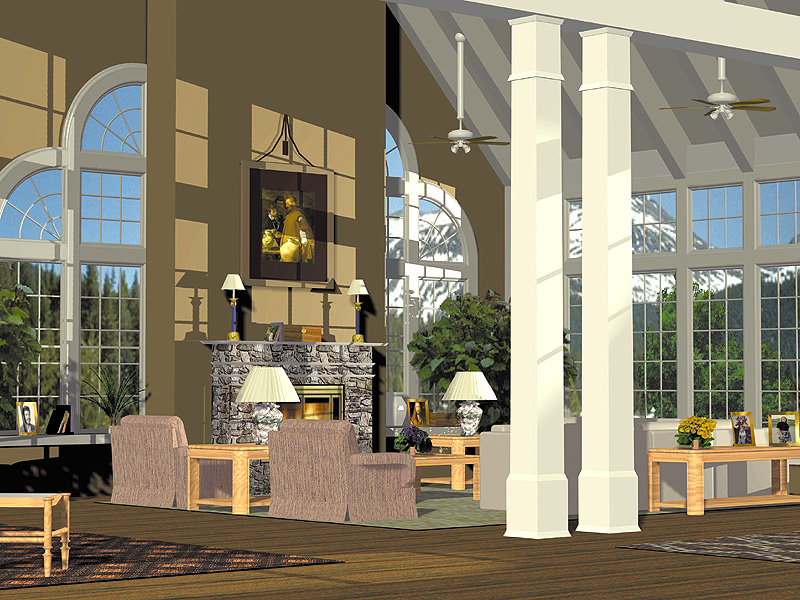| You are here: Home » Customer Imagery |

Click here to return to the main index page.




The first image is an accurate rendering of a watch model that was imported into NuGraf from 3ds Max. The watch uses 5 texture maps: two for the watch face, one for the numerals around the watch face, one for the gold reflection map and one for the wrist band texture. Notice the high quality anti-aliasing of the texture on the watch face. There is also a spot light source that is casting subtle shadows of the minute and hour hands onto the watch face.
Copyrights: the model was created by Adriano Del Fabbro.

The second image is complex scene of a TGV train station modeled by Isao Nagoaka of DigiArchitecture using Form/Z. The raw polygon model data was exported from Form/Z to NuGraf via multiple 3d data files in the Wavefront format. Once imported, NuGraf's 'Selector Window' was used to quickly organize all the pieces into neatly organized hierarchical groups that could easily be picked and manipulated. Texture coordinates were then added to specific models. Subsequently, all textures and materials were selected and assigned to the surfaces using NuGraf.
Of particular interest is the point light source which has been placed inside of the train station and which casts shadows through the glass onto the inside-top roof of the building. NOTE: these shadows were not ray traced even though they appear to be so (sharp shadows are typical of a ray tracer); rather, all the shadows were created automatically by 6 shadow maps of resolution 2kx2k.
Copyrights: Isao Nagoaka of DigiArchitecture.

The last image is another scene created by Okino's Mark Zadel. Mark was given a real picture of this room which originally appeared in an architectural magazine and was asked to simulate the image to the best of his abilities using NuGraf software. Mark set forth to model the room and all the objects using LightWave then used NuGraf software to arrange the objects in the room, create the various materials, assign texture maps, place light sources and render the final image.
Of particular interest in this scene are the shadows which shine from the right side of the room onto the back wall - notice how well defined and sharp they are. Also, all plants and bushes seen in the image are actually bitmap images that have been texture mapped onto rectangular polygons (the black areas in the bitmap images have been made transparent using NuGraf's alpha channel capabilities). The mountain seen through the windows is a bitmap image placed in the background of the scene.
Copyright (c) Okino Computer Graphics, All Rights Reserved.

This is an excellent example of how complex images with the look of "radiosity" can be rendered quickly and efficiently with NuGraf.
The scene was created by Mr. Jim Mattison (Verity Grafix) in AutoCAD using 3D solids then exported to NuGraf via DWF for rendering. To simulate the soft shadows and diffuse interreflections typical of a radiosity rendering Mr. Mattison added 18 light sources to the scene (16 point lights and 2 spot lights) of which 12 of the point lights and the 2 spot lights casted shadows. NuGraf's "shadow map" shadow casting algorithm was used to create the nice soft shadows quickly and in a conservative amount of memory (all shadow maps were computed at a resolution of 512x512 pixels).
Copyrights: The image is owned and copyrighted by Integrated Environmental Technologies (IET) and Verity Grafix.


